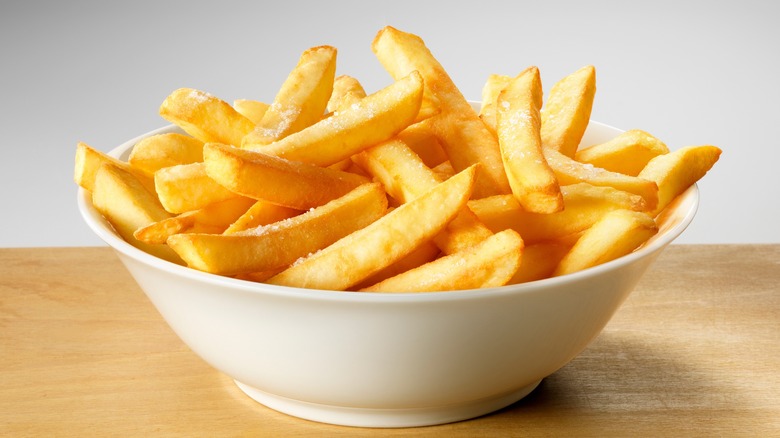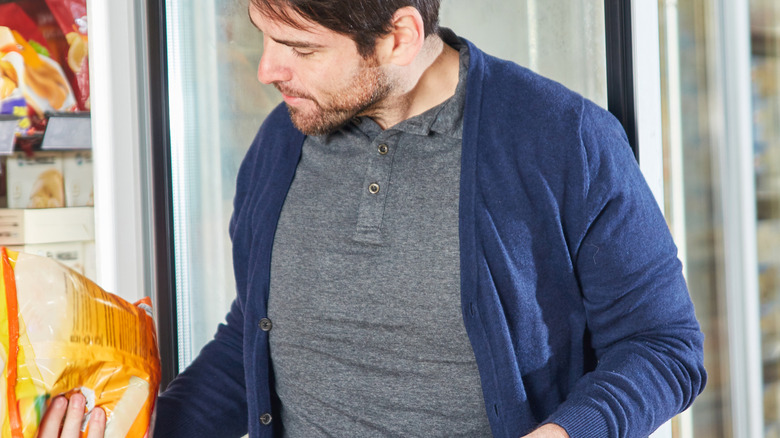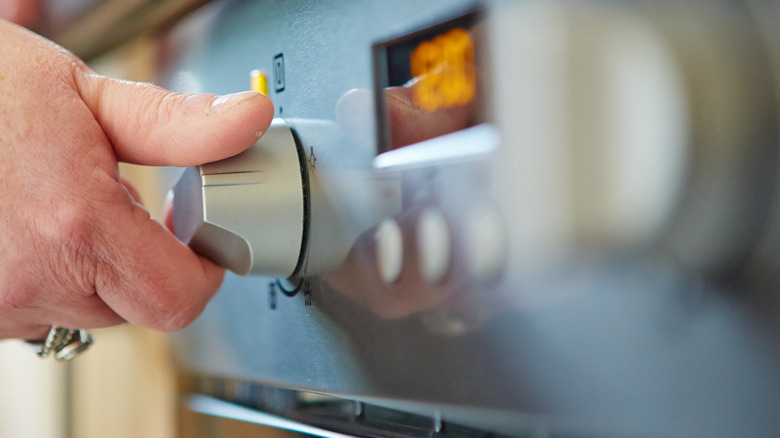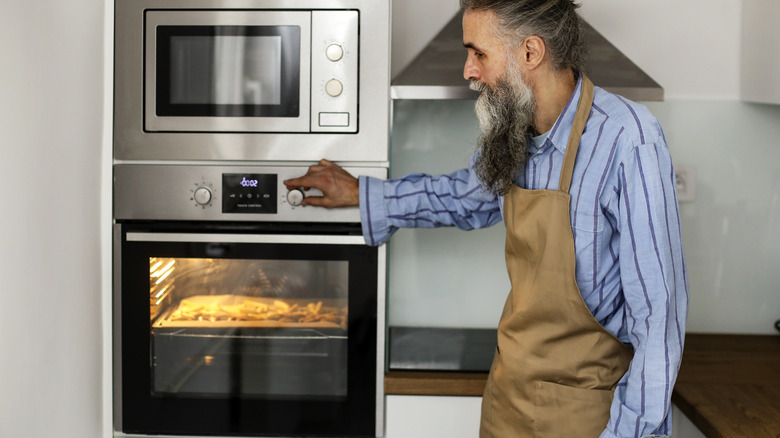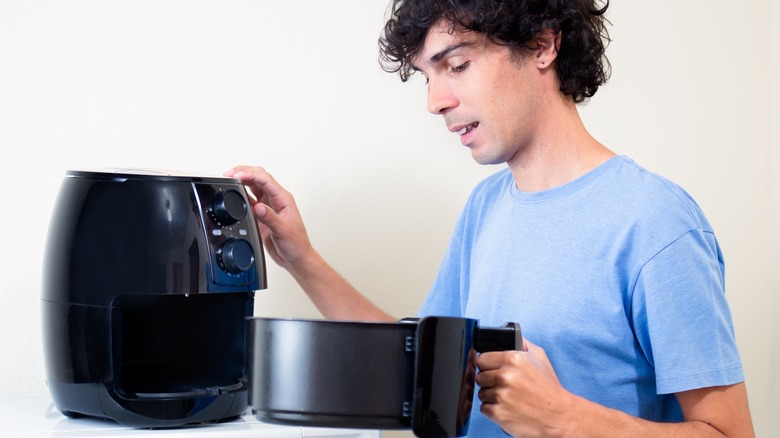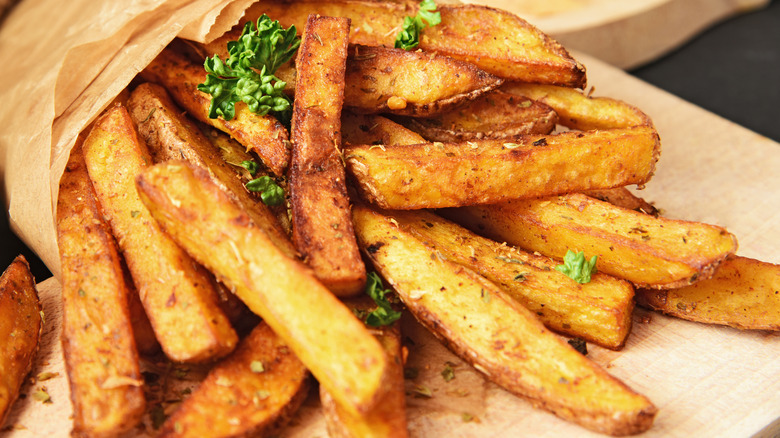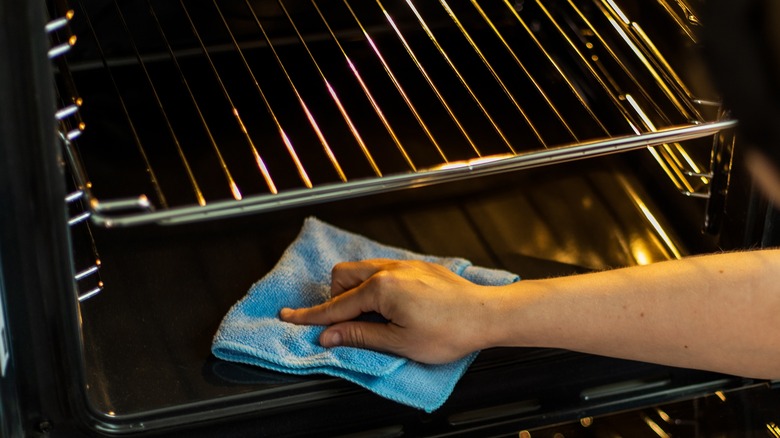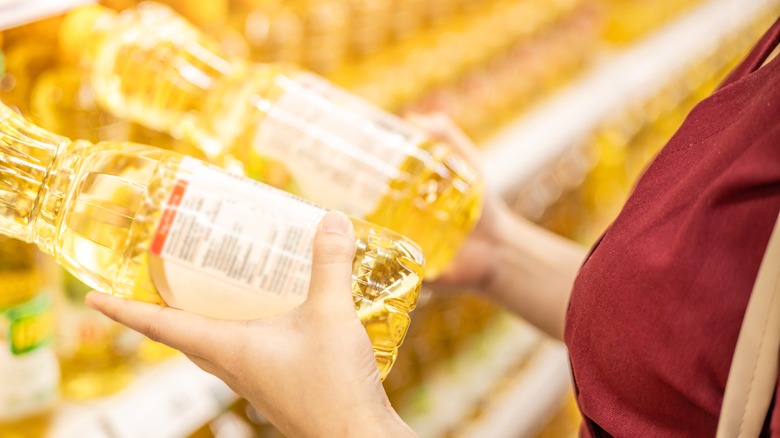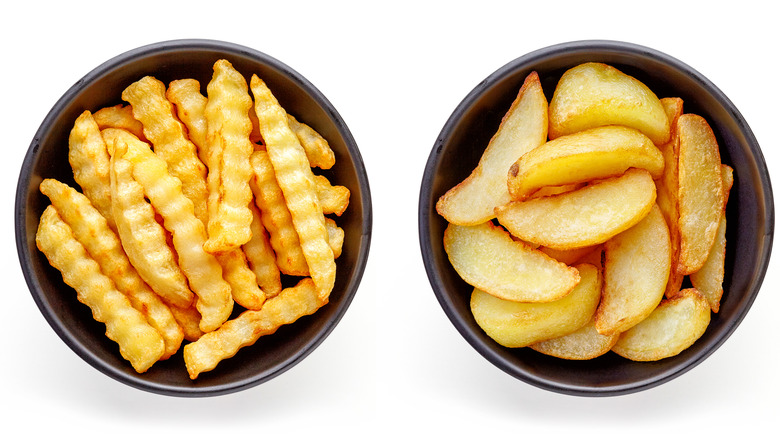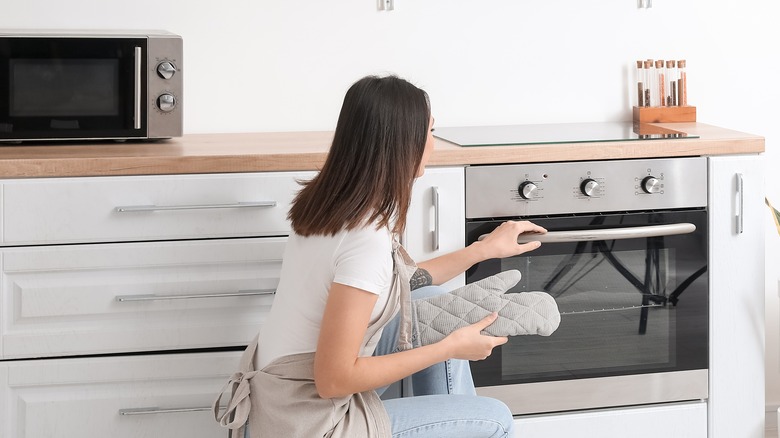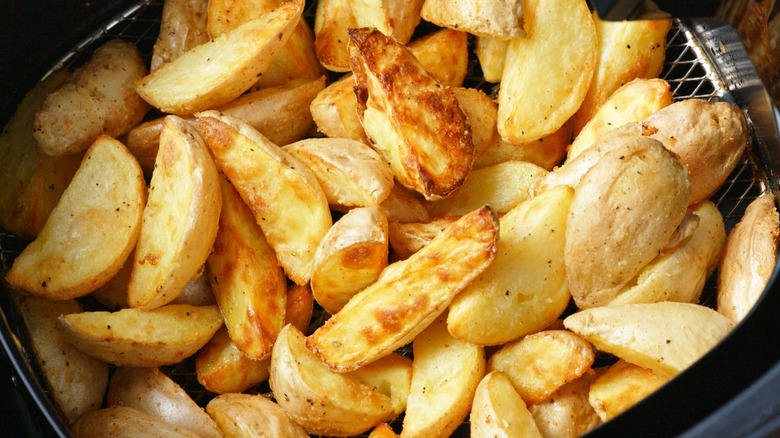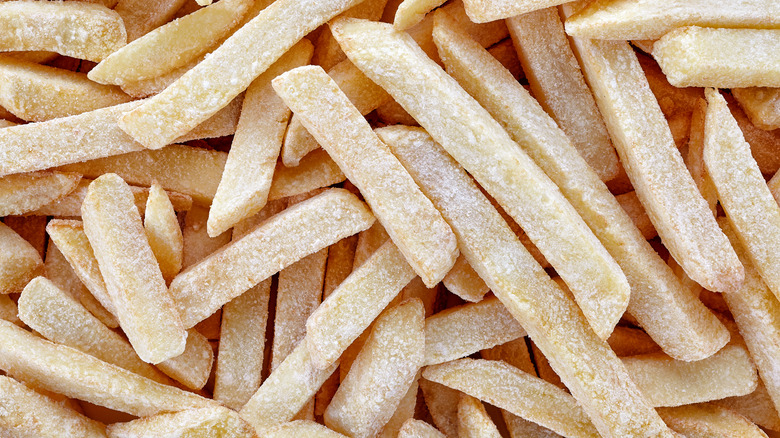Avoid These Mistakes When Cooking Frozen French Fries
Picture this: You're standing in your kitchen, a bag of frozen french fries in hand, ready to transform them into a crispy, irresistible snack. But achieving perfection with these frozen potatoes isn't as simple as just tossing them into the oven or fryer. It's an art that requires a delicate balance of heat, technique, and timing. Mastering the art of cooking frozen fries takes patience and a passion for excellence.
Don't worry — we're here to help. In this guide, we'll reveal common mistakes and show you how to avoid them like a pro. Whether you're using an air fryer, oven, or deep fryer, we've got tips and tricks to help you achieve perfect fries. So put on your apron and get ready to take your frozen fries game to the next level — it's time to create golden, crispy fries that will impress your loved ones and leave them wanting more.
Skipping the instructions
If there's one thing you should never overlook when cooking frozen french fries, it's the instructions on the package. Neglecting to read and follow them can lead to unsatisfactory results. This is crucial as the instructions vary depending on the type of frozen fries you're working with—whether they're shoestring, crinkle-cut, or twirls. Take a moment to familiarize yourself with the instructions provided by the manufacturer.
The instructions may contain important tips and insights that can make a significant difference in the final result. For example, they might specify the exact temperature at which the fries should be cooked to achieve that perfect balance of crispness and tenderness.
Furthermore, the instructions might provide guidance on the best cooking method for the type of fries you have. Some frozen fries are specifically designed for air frying, while others may be better suited for baking in the oven or deep frying. By following the recommended cooking method, you can ensure that the fries cook evenly and develop the desired texture and flavor.
Not preheating
Preheating is a step that often gets brushed aside, but it holds the key to cooking frozen french fries flawlessly. Whether you're using an air fryer, oven, or deep fryer, preheating is non-negotiable. It ensures even cooking and helps your fries achieve that delightful crunch. Keep in mind that different brands may have specific preheat instructions, so always refer to the cooking directions on the packaging.
When using an air fryer, aim for a preheating temperature of approximately 390 degrees Fahrenheit or 200 degrees Celsius. This allows the air inside the fryer to reach the optimal temperature, creating a hot and consistent environment for your fries.
If you take the conventional oven route, crank it up to around 430 degrees Fahrenheit or 220 degrees Celsius. Preheating the oven ensures that the fries start cooking immediately when they hit the hot baking sheet, resulting in a crisp exterior and a fluffy interior.
If you're opting for the deep fryer, set the temperature to about 375 degrees Fahrenheit or 190 degrees Celsius. It's crucial to preheat the oil to achieve golden and crispy fries. It allows the fries to cook quickly and evenly, preventing them from becoming greasy and soggy.
Remember, preheating sets the stage for excellence. By taking the time to preheat your cooking equipment, you'll be on your way to enjoying perfectly cooked frozen fries that are crispy on the outside and tender on the inside. Don't skip this crucial step.
Overcooking or undercooking
Finding the perfect balance between overcooking and undercooking your frozen french fries is a delicate art that requires finesse. The consequences of veering too far in either direction can be disastrous. Overcook them, and you'll be greeted with dry, charred sticks that lack any semblance of enjoyment. Undercook them, and you'll be left with disappointingly soggy fries that fail to satisfy.
To avoid these cooking missteps, it's crucial to adhere to the recommended cooking time provided in the instructions or recipe. Set a timer if necessary, and keep a watchful eye on your fries as they cook.
There are also some signs you can look out for to ensure your fries are cooked to perfection. If you're baking them in the oven, check for a light golden color and a crispy texture. If you're deep frying, listen for the sizzling sound to subside, indicating that the moisture has been cooked out of the fries.
Disturbing too frequently
When cooking frozen french fries, it's important to be patient and avoid disrupting the cooking process. It can be tempting to constantly check on your fries, flip them around, or open the cooking equipment to see how they're doing. However, doing so can hinder their progress and prevent them from cooking evenly.
Instead of giving in to the temptation to poke and prod your fries as they cook, try to allow them to cook undisturbed for the majority of the recommended cooking time. This will give each stick the opportunity to develop a crispy exterior and cook evenly.
Of course, there may be times when it's necessary to intervene. For example, if you're cooking your fries in the oven, you may need to flip them halfway through the cooking time to ensure they cook evenly on both sides. If you're deep frying your fries, you may need to give them a gentle shake to prevent them from sticking together. The key is to practice restraint and only intervene when necessary.
Not seasoning the fries
Seasoning can enhance the flavor of your french fries and prevent them from being bland. Experimenting with different spices and herbs can create unique taste combinations that elevate the flavor of your fries. Trust your instincts and let your taste buds guide you in finding the right seasoning balance.
A sprinkle of salt can enhance the natural flavors of your fries. But why stop there? Experimenting with different spices and herbs can create unique taste combinations. Paprika can add smokiness, while garlic powder can provide a savory flavor. For those seeking a herbaceous twist, a medley of herbs like rosemary, thyme, and oregano can also add depth to the flavor of your fries.
In addition to spices and herbs, there are other ways to add flavor to your fries. Tossing them in a mixture of olive oil and grated parmesan cheese before baking can add a cheesy flavor. Drizzling them with truffle oil can also create an indulgent treat.
Remember, there are no strict rules when it comes to seasoning. So don't be afraid to try new combinations. If you are still seeking inspiration, here is a foolproof seasoning blend to get you started on your journey.
Using uncleaned equipments
Maintaining cleanliness is of utmost importance when it comes to cooking frozen french fries. Neglecting to clean your cooking equipment before starting can introduce unwanted flavors and compromise the overall quality of your fries. Take a moment to ensure that your frying equipment or baking sheets are pristine, free from any residue or remnants of previous cooking adventures. By beginning with a clean slate, you set the stage for fries that are untainted by any lingering influences.
Beyond just the cooking equipment, it is essential to also focus on personal hygiene. Before handling the fries, make sure your hands are thoroughly washed to prevent the transfer of bacteria or other contaminants. Additionally, keep the cooking area clean and organized, minimizing the risk of cross-contamination.
By maintaining cleanliness throughout the cooking process, you ensure that your frozen french fries remain of the highest quality. It allows the true flavors and textures to shine through without interference from unwanted residues or bacteria. Cleanliness not only enhances the taste but also promotes food safety, protecting you and your loved ones from potential health risks.
Disregarding oil
Oil plays an instrumental role in the cooking process, regardless of whether you're air frying, deep frying, or baking your frozen french fries. Your choice of oil can notably affect the flavor profile, texture, and general quality of your fries, hence it requires thoughtful consideration.
For those employing a deep fryer, using fresh oil is of utmost importance. Oil that has been used multiple times, has gone stale, or is rancid can imbue your fries with an undesired taste and cause them to adopt a greasy texture. Therefore, ensure the oil is fresh before initiating the deep-frying process.
Meanwhile, for air fryers and ovens, a light application of oil can drastically enhance your fries' exterior, helping to achieve a pleasing golden, crispy texture. Opt for oils with a high smoke point like canola or avocado oil to withstand the high cooking temperatures without breaking down. It's essential to use an adequate amount of oil to ensure the fries have enough moisture and facilitate proper browning, preventing them from becoming dry or lacking in flavor.
Overlooking size and proportion
When it comes to cooking frozen french fries, size plays a pivotal role in determining the end result. It's not just about the size itself, but the consistency of that size across the board. Larger steak fries will naturally take longer to cook compared to fries of smaller-sized variety. If the size variance is considerable, you could end up with an unevenly cooked batch: Some fries may be perfectly done, while others are still uncooked or, worse, overcooked.
To avoid this, always try to arrange fries that are similar in size in your oven, deep fryer, or air fryer. This step isn't merely aesthetic—it's essential for achieving uniform cooking. The consistent size allows heat to distribute evenly, ensuring that every fry reaches its optimal crispness at about the same time.
It can be tempting to expedite the cooking process by filling the appliance with an excessive amount of fries. However, placing too many fries can hinder proper heat circulation, leading to the risk of unevenly cooked results. To achieve a desirable outcome, it is crucial to strike a balance between the number of fries and their size.
Misunderstanding your tools
Appliances, much like the chefs who operate them, possess their own unique characteristics and cooking nuances. This diversity can manifest in different cooking times, heat distribution, and overall performance, even among similar appliances such as air fryers, ovens, or deep fryers. For instance, one air fryer might cook quicker or more evenly than another, and a similar disparity can exist between different ovens or deep fryers.
Recognizing this, it becomes crucial to familiarize yourself with the specifics of your own appliance. Understanding how your appliance operates in terms of cooking duration and heat distribution will empower you to make necessary adjustments for your frozen fries. This personalized calibration allows you to optimize the cooking process tailored to your appliance's unique characteristics.
If your fries aren't emerging as desired, don't hesitate to experiment with the settings. Modify cooking times, adjust temperatures, and change the position of the fries within the appliance. Every appliance has an optimal operation zone for different foods. Find this sweet spot for your frozen fries through mindful testing and adjustments. By mastering the intricacies of your appliance, you elevate your chances of consistently producing ideal fries.
Overcrowding
The arrangement of frozen french fries in your cooking appliance is crucial for achieving optimal results. Overcrowding, although it may seem convenient, can negatively impact the outcome. Whether using a deep fryer, oven, or air fryer, stacking fries on top of each other obstructs the consistent flow of heat, ultimately hindering the cooking process.
To ensure uniformly cooked fries, it is essential to optimize the available space. Arranging the fries in a single layer with sufficient spacing allows for even heat circulation. This distribution of heat is the key to achieving fries with a delightful crispiness on the outside, while maintaining the desired tenderness within.
It's also important to cook the fries in multiple batches if needed. While it may be tempting to cook all the fries at once, especially when dealing with a large quantity, overcrowding the cooking surface can lead to uneven cooking. By dividing the fries into smaller batches, you ensure that each fry has enough space to cook properly, promoting even browning and a consistent texture.
Not drying before cooking
Ensuring that your fries are properly prepared before that first sizzle can make a world of difference to the final result. One technique is to dry your frozen fries before cooking.
It all boils down to the science of cooking. Any frost or ice clinging to the fries can lower the temperature of the oil (in the case of deep frying) or cause steam in the air fryer or oven. These factors can hinder the process of achieving that coveted golden-brown color and crisp texture.
So, how do you prevent this? It's simple. Prior to cooking, gently pat your fries dry with a clean kitchen towel or paper towels. While this may seem like an insignificant step, it can actually have a major impact. It can reduce the chances of the fries sticking together and also helps to prevent the oil from splattering dangerously due to contact with water (especially crucial in deep frying).
Drying the fries also promotes even cooking by allowing the heat to penetrate the surface more effectively. The absence of excess moisture also prevents steaming, allowing the fries to undergo proper caramelization, allowing the fries to develop a delightful crunch while retaining a fluffy interior.
Not using proper tray, sheet, or basket
Using the appropriate trays, sheets, or baskets is crucial for achieving the best outcomes when cooking frozen french fries. They facilitate proper heat circulation, ensure even cooking and browning, prevent sticking or falling, and ultimately contribute to a delightful and satisfying experience when enjoying your crispy fries.
When using a deep fryer, using baskets with wire mesh bottoms is essential for achieving optimal results. Specifically designed to optimize the deep frying process, these baskets allow the hot oil to circulate freely around the fries. This circulation ensures even cooking, resulting in a consistent texture and flavor. The wire mesh design serves a dual purpose by preventing the fries from sticking to the basket and acting as a protective barrier to prevent them from falling into the oil.
Using a baking sheet or tray is highly recommended when cooking with an oven or air fryer. Placing the fries on the sheet or tray elevates them, enabling even circulation of hot air for optimal crispiness, consistent cooking, and browning. Moreover, the sheet or tray acts as a protective barrier, preventing the fries from sticking to the cooking surface and minimizing the risk of burning or scorching.
